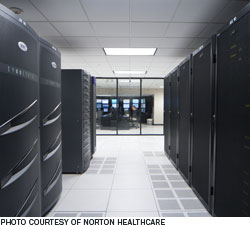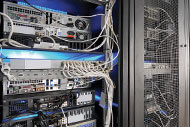 The transition to electronic health records (EHRs) and increased use of information technology (IT)-based medical information are pushing the limits of computer network availability at some health care facilities, which has hospitals concerned.
The transition to electronic health records (EHRs) and increased use of information technology (IT)-based medical information are pushing the limits of computer network availability at some health care facilities, which has hospitals concerned.
In fact, it is the No. 1 computer network-related concern of hospital data center, IT and facility managers, according to a recent survey conducted by Emerson Network Power, Columbus, Ohio.
Emerson surveyed its Data Center Users' Group, an Emerson-sponsored association of managers at various facility types, on a range of network-related issues. The group includes hospital data center, IT and facility managers among its members.
While hospital data center managers said system availability was their No. 1 concern, personnel from other types of facilities said network monitoring and infrastructure management was their chief worry.
Dan Draper, manager of strategic marketing and research, Emerson Network Power, says that the proliferation in the use of digital information and the Internet at hospitals within the past five years accounts for system availability being its major concern.
Demands on a hospital's data center and communication network have expanded quickly from operating the phone system and payroll to include EHRs, the nurse call system, patient and medical equipment tracking, prescription dispensing, radiology image transmission and more, Draper says.
He adds that data center availability can be a life-or-death matter in a hospital. "If the data center goes down because of a power outage, patient records cannot be accessed. Care could be delayed and patient outcomes negatively impacted," he says.
System availability also is a concern because the increased use of picture archiving and communication systems to transmit and receive medical images as quickly as possible impacts the data center and network. Insufficient power and cooling capacity can cause inadequate network systems to overheat and shut down, he warns.
According to the survey, infrastructure management and monitoring, or visibility, was the second largest concern for hospital data center managers. Again, the expanding and critical nature of digital information in hospitals makes the ability to observe proper network operation with the latest software products a major concern, says Draper.
For more information, visit www.datacenterug.org.




